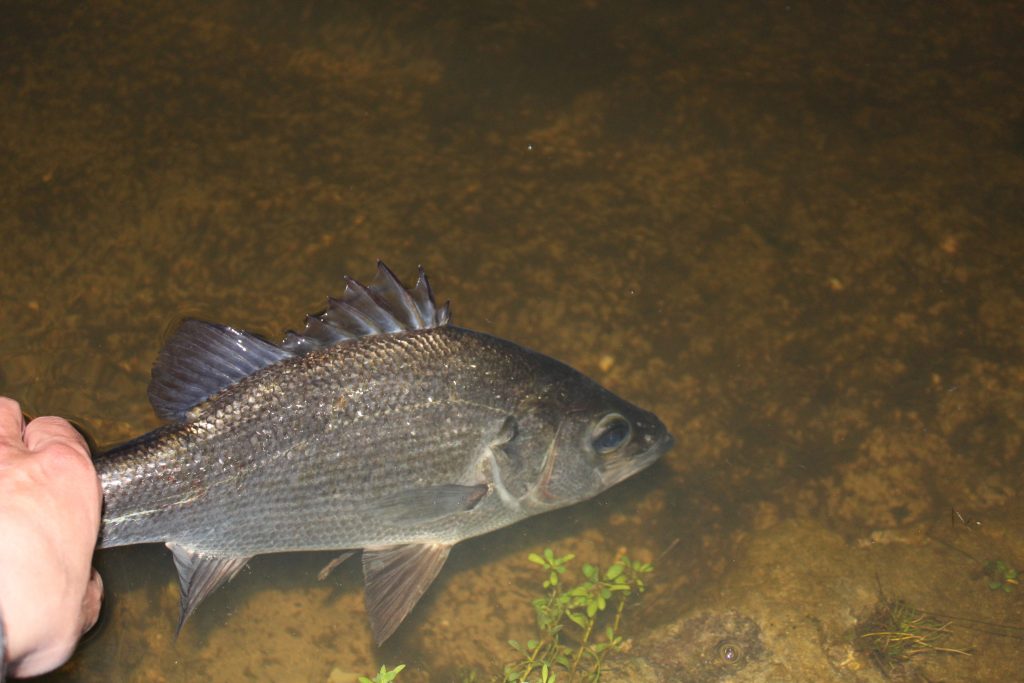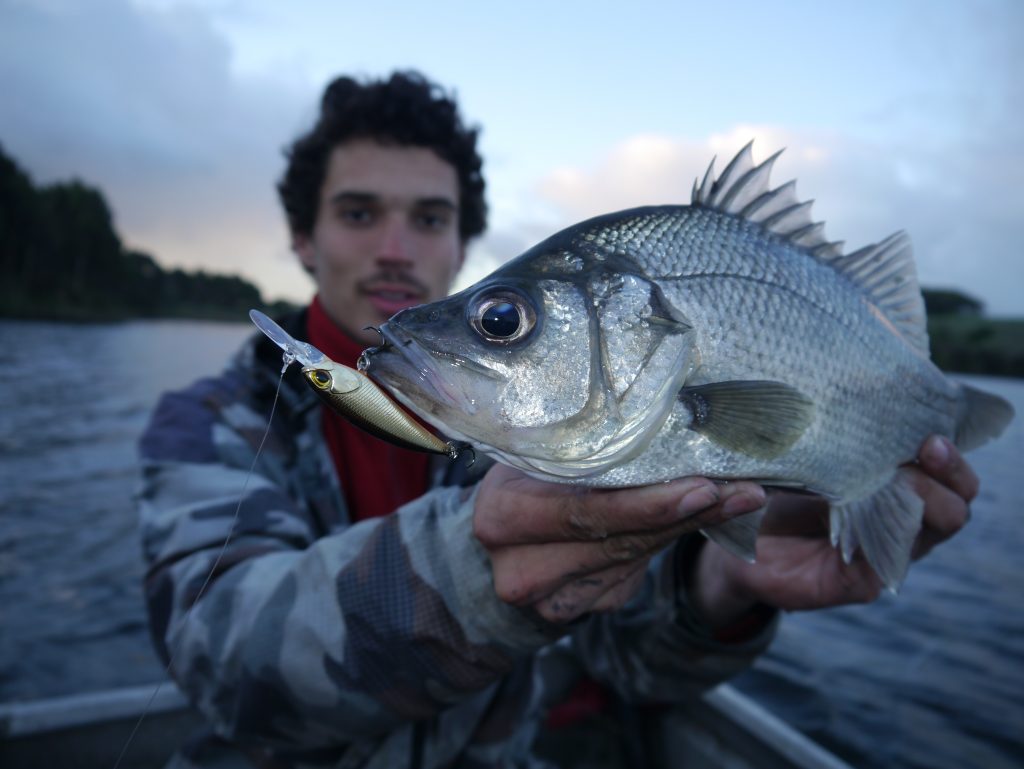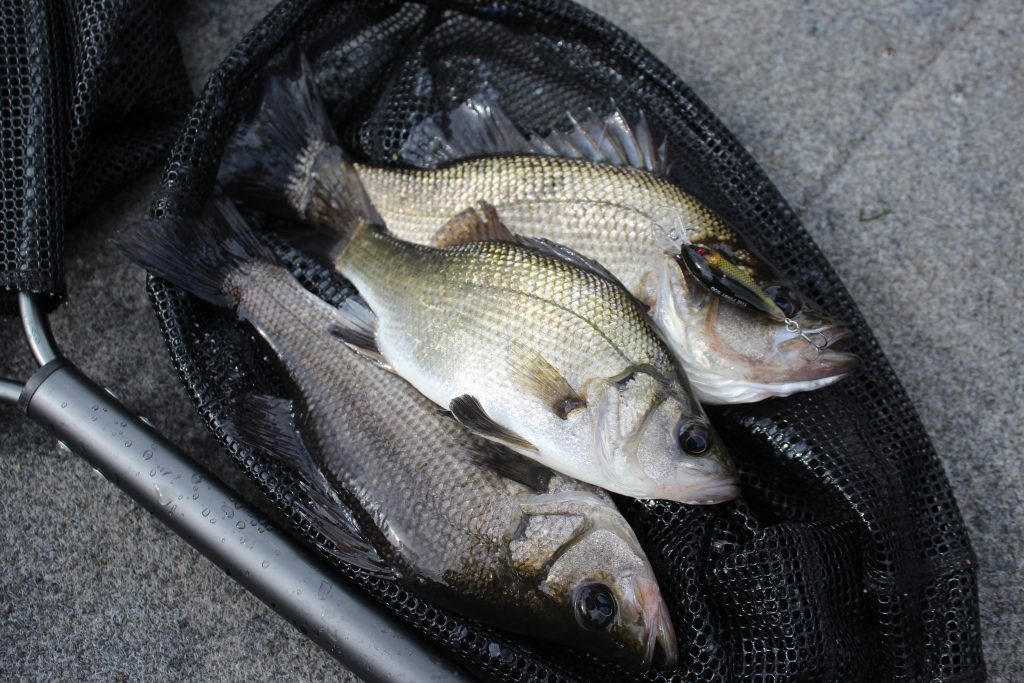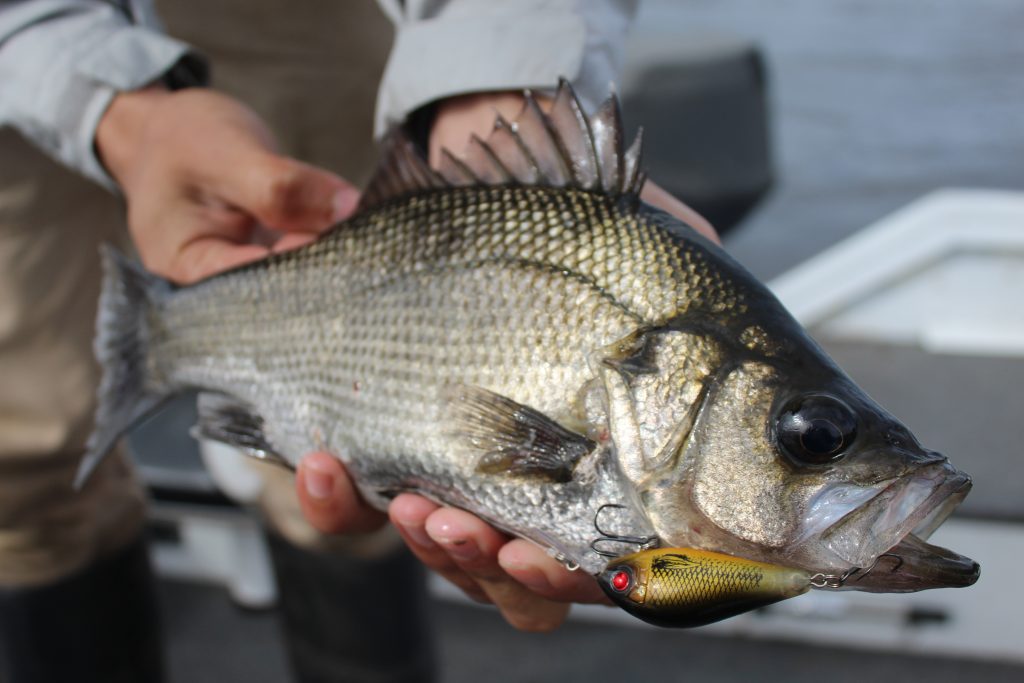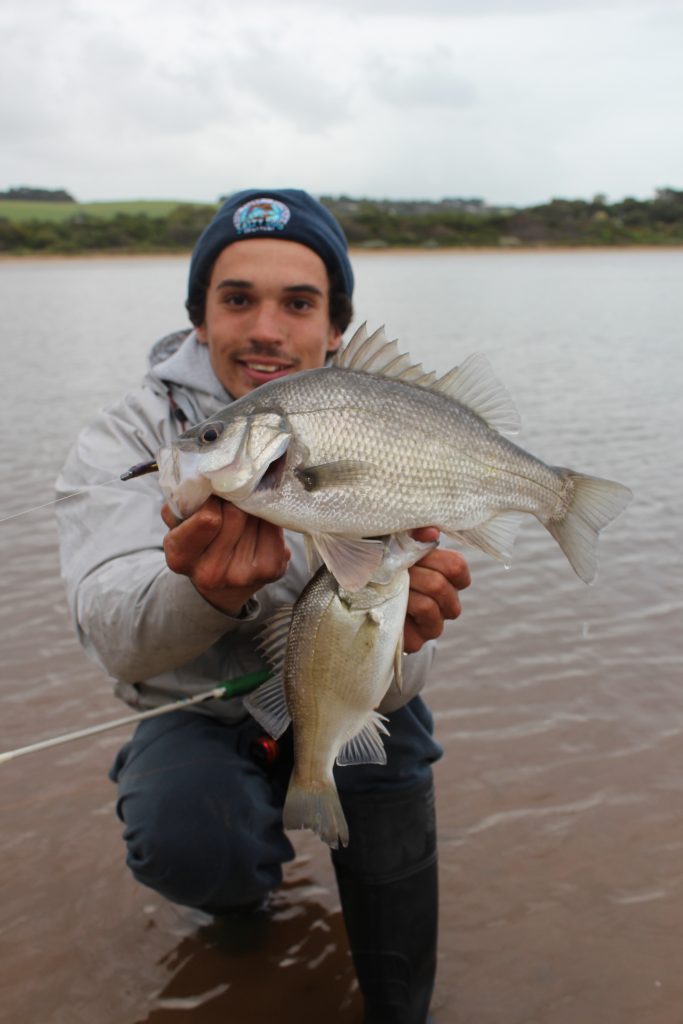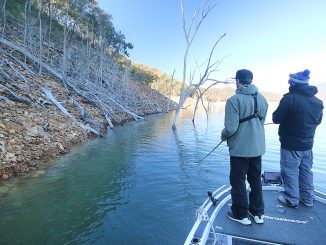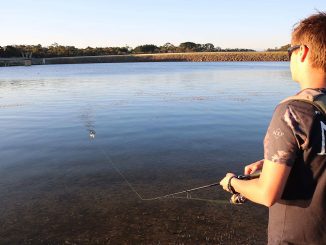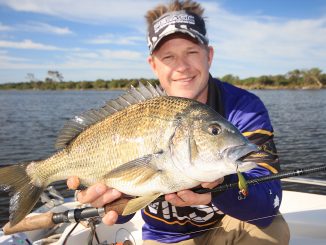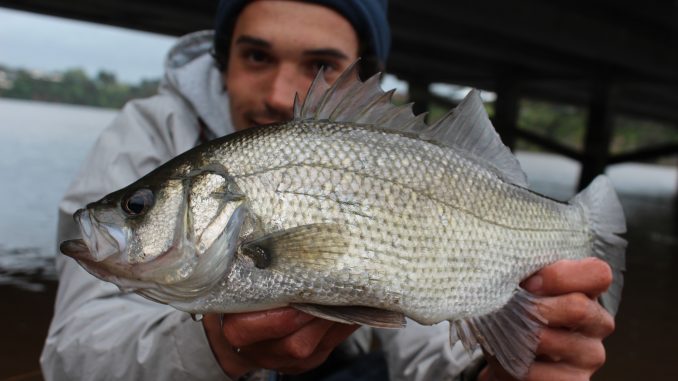
by Colby Lesko •
That old saying ‘10% of anglers catch 90% of the fish really does ring true for the elusive estuary perch. While many anglers are avid perch anglers and know every little hidey-hole to find a perch in their local estuary, to many others they are a fish that is seen in photos, yet never seem to make an appearance on the water.
While estuary perch are known for being tricky to find and don’t have the sheer numbers of other species such as bream in some estuary systems, with the right approach and specific techniques, there’s no reason why they can’t be caught just as easily as the humble bream.
Perch will take a variety of baits, however live or fresh minnows or beach worms are ideal. Despite often succumbing to baits, it is lure fishing that really brings the EPs unstuck. EPs are suckers for an artificial offering and will take anything from a surface popper to a crab imitation hanging on the bottom and everything else in between. Choosing what lure to target perch with really is up to the angler’s personal preference, and what works for them with other species will generally do the job on perch as well.
Lures
For those newcomers, suspending minnows such as Rapala X-Raps, Balista Trances or Daiwa Double Clutches are a sure fire hit when the fish are off the bottom or hiding under cover.
Soft plastics such as Z-Man GrubZ, Berkley Minnows and Fish Arrows are deadly when the fish are a little deeper. Jighead size depends on water depth you are fishing, and going as light as possible appears to bring best results, as I use around 1/18-1/12oz when fishing edges and move up to around 1/8-1/6oz if fishing deeper.
Surface poppers, surface pencils, vibes, small lipless crankbaits and various other bream and bass lures are all worth having with you and will also take estuary perch. So if you have something you think may tempt a perch, tie it on and have a go – chances are it will work.
Techniques
Snags
Throwing you offering right up and into the structure you think the perch are hiding in is ideal. Once the lure is in the strike zone, don’t be afraid to pause it for a few seconds, as the pause often results in many of my perch strikes. I generally give a snaggy area or drop off a 20-30min spin, and if it isn’t producing on hardbodies or plastics, I will head off in search of other fishy stretches.
Any area of the estuary system can hold perch, and while I have sometimes found them in some strange places using some unorthodox techniques, the general rule is structure, drop-offs and bait-rich areas. By keeping a keen eye on your sounder and the water’s surface for signs of bait as you travel past the likely looking areas, you should be off to a great start. By using a couple of different techniques at each spot and trying a number of different areas, you will be in with the best chance of finding estuary perch.
Deep
Perch are creatures of habit, and once they are found in one area at a certain time, chances are they can be found there again. During winter, estuary perch will school up to spawn, making them easy to spot on the sounder as they appear as closely packed schools of fish close to the bottom. While they are easy to find at this time of year as they sit on the halocline (saltwater/freshwater layer), getting them to bite can be tricky. Persistence overtop of the school is key, with the best results coming from slowly working your offering over the perch again and again. Once the spawning is over, the perch begin to disperse more over the estuary inhabiting drop-offs, snags, reefs and weed beds from the estuary mouth right up into its freshwater reaches.
Other areas
While the perch in many of the snag-rich estuary systems are notorious for hanging off large snags, in some of the less snaggy estuaries the fish will often just hang on much smaller bumps or hard bottom. One of my favorite spots to target perch in the Hopkins is just a small patch of rocky bottom!
So if you’re fishing a system with little structure, pay attention to the areas of hard bottom and drop-offs, as theses can hold just as many perch as the snaggy systems. The perch can be found right through the water column and while some days you may be targeting them on a deep drop-off with vibes or soft plastic, other days surface lures right up against the bank will bring them unstuck. It pays to always mix it up, as you never know what you might stumble upon.
Destinations
The South West has a number of great estuary perch rivers, and while the Glenelg River really is a first class fishery and known for its great perch, the Hopkins and Fitzroy rivers are not far behind, as they both hold some great perch fishing. These rivers would be my top three for the South West, however pretty much all of the estuaries in the South West offer estuary perch.
Hints
Flow is another important factor to watch when targeting estuary perch, as large rain events rise and dirty the estuaries with freshwater, and this moves the perch around and often leaves them hungry. As the water drops and clears, the fishing should fire as the perch begin to feed.
The recent floodwaters in the South West have created this very scenario, and as the water has just begun to reside the perch have come on cue. The fishing has been great for perch since the flow has subsuded and is expected to remain great into the coming months as the water will only settle and clear more.
Lastly is time of day, and while perch can be caught at anytime of the day, the periods of dawn and dusk are well worth fishing, as the perch generally seem to bite better in low light conditions when the water is clear. Fishing into the night is also a great option for those willing to fish into the darkness, as perch happily feed all night due to their large eyes and great night vision.
So next time you’re in search of perch, remember these tips and you should be on your way to cracking the perch code. Just remember, this species is long-lived, having been recorded to over 30 years in age. So while keeping one or two for the table is fine, it pays to let the big breeders go!


